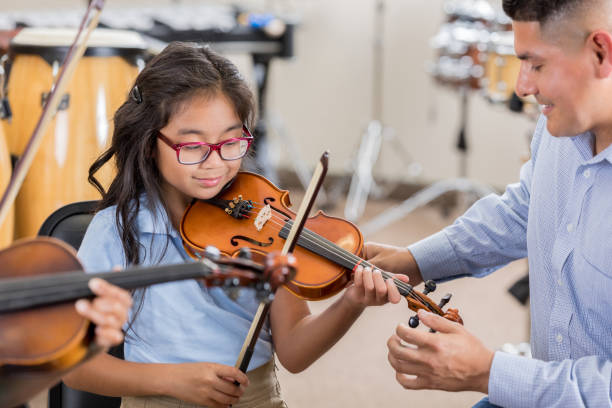3. Gather Necessary Documentation
Having the right documentation ready is essential for a successful grant application process for sports programs. Proper preparation can save you time and prevent last-minute stress. Here’s a detailed guide on what you need and how to organize it to secure federal grants for youth sports.
Essential Documents You’ll Need
- Proof of Nonprofit Status: Most federal grants for youth sports require applicants to be recognized as a nonprofit organization. This typically means having a 501(c)(3) status or similar. Ensure you have your IRS determination letter or equivalent documentation ready to prove your nonprofit status.
- Detailed Program Description: This is a critical part of your application. Your program description should include:
- Goals and Objectives: Clearly outline what your youth sports program aims to achieve.
- Activities and Methods: Describe the activities you’ll conduct and the methods you’ll use to reach your goals. Be specific about the types of sports, training sessions, or events you’ll organize.
- Expected Outcomes: Explain the anticipated results and how you will measure success. Use both qualitative and quantitative metrics.
- Comprehensive Budget Plan: A detailed budget shows how you plan to use the grant funds. Include:
- Itemized Expenses: Break down your costs into categories such as equipment, staffing, facility rental, travel, and administrative expenses.
- Justification of Costs: Explain why each expense is necessary and how it supports your program’s goals.
- Letters of Support: Gather letters from community leaders, parents, schools, or partners who can vouch for your program’s impact. These letters add credibility to your application and demonstrate community support.
4. Organize Your Documentation
Organizing your documents is key to a smooth grant application process for sports programs. Here are some practical tips:
- Create a Checklist: List all required documents and check them off as you gather each one. This ensures you don’t miss any critical components.
- Digital and Physical Copies: Keep both digital and physical copies of all documents. Digital copies should be well-organized in clearly labeled folders on your computer or cloud storage.
- Format Consistently: Use consistent formatting for all documents. This includes font type, size, and margins. Consistency makes your application look professional and easier to read.
Review and Revise
Before submitting your application, review all documents thoroughly. Look for any errors or omissions and ensure everything is up-to-date. It’s also helpful to have someone else review your documents to catch any mistakes you might have missed.
Stay Updated
Grant requirements can change, so it’s important to stay informed about any updates or changes in the documentation needed. Regularly check the grant provider’s website for the latest information.
By gathering and organizing all necessary documentation in advance, you can streamline the grant application process for sports programs and increase your chances of securing youth sports program funding. Thorough preparation shows the grant reviewers that you’re professional, diligent, and committed to making a positive impact through your youth sports program. Good luck, and may your hard work and dedication pay off in securing the funding you need!
5. Write a Compelling Grant Proposal
Crafting a strong and compelling grant proposal is the heart of the grant application process for sports programs. Your proposal needs to stand out and clearly communicate the value and impact of your youth sports program. Here’s how to create a winning proposal that can secure federal grants for youth sports.
Start with a Strong Introduction
Your introduction should immediately grab the reader’s attention. Clearly state the purpose of your program and its importance to the community. For example:
“Our youth sports program aims to empower children in underserved communities by providing access to quality sports training and promoting healthy lifestyles. By focusing on physical fitness and teamwork, we are dedicated to fostering a positive environment where young athletes can thrive both on and off the field.”
Describe the Need
A compelling proposal must demonstrate a clear need for your program. Use data, statistics, and testimonials to highlight the challenges your community faces and how your program addresses these issues. For instance:
“According to recent surveys, over 50% of children in our community lack access to organized sports activities, leading to increased rates of obesity and reduced opportunities for personal development. Our program bridges this gap by offering structured sports activities, mentorship, and health education.”
Outline Your Program
Detailing how your program will operate is crucial. Include specific activities, timelines, and the expected outcomes. This section should cover:
- Program Activities: Describe the types of sports, training sessions, and events you’ll organize.
- Implementation Timeline: Provide a timeline for when each activity will take place.
- Expected Outcomes: Explain what you hope to achieve, such as increased physical fitness, improved teamwork skills, and enhanced community engagement.
Present a Detailed Budget Plan
A transparent and detailed budget shows how you plan to use the grant funds effectively. Break down your expenses and justify each cost. For example:
“Our budget includes $5,000 for sports equipment, $3,000 for facility rentals, $2,000 for coaching staff, and $1,000 for transportation. These funds are essential for providing high-quality training and ensuring all participants can attend our events.”
Highlight the Benefits
Emphasize how your program aligns with the grant’s objectives and the broader benefits to the community. This can make your application more compelling:
“By supporting our youth sports program, you are investing in the health and well-being of our community’s future leaders. Our program not only promotes physical fitness but also teaches valuable life skills such as discipline, teamwork, and perseverance.”

Advertisements
Proofread and Seek Feedback
Before submitting your proposal, proofread it carefully to eliminate any errors. Additionally, seek feedback from colleagues or mentors to ensure your proposal is clear, concise, and compelling.
Use a Professional Tone
While your proposal should be friendly and conversational, it should also maintain a professional tone. This balance helps convey your passion and commitment while also demonstrating your professionalism and reliability.
Write a Compelling Grant Proposal
Crafting a strong and compelling grant proposal is the heart of the grant application process for sports programs. Your proposal needs to stand out and clearly communicate the value and impact of your youth sports program. Here’s how to create a winning proposal that can secure federal grants for youth sports.
Start with a Strong Introduction
Your introduction should immediately grab the reader’s attention. Clearly state the purpose of your program and its importance to the community. For example:
“Our youth sports program aims to empower children in underserved communities by providing access to quality sports training and promoting healthy lifestyles. By focusing on physical fitness and teamwork, we are dedicated to fostering a positive environment where young athletes can thrive both on and off the field.”
Goals and Objectives
Clearly define the goals and objectives of your youth sports program. This section should outline what you hope to achieve and the specific steps you will take to get there. For example:
Goals:
- Improve physical fitness and health outcomes among participating youth.
- Foster teamwork, leadership, and discipline through sports activities.
- Increase access to organized sports for underserved communities.
Objectives:
- Enroll at least 200 children in the program within the first year.
- Conduct weekly training sessions and monthly sports events.
- Partner with local schools and community centers to expand outreach.
Describe the Need
A compelling proposal must demonstrate a clear need for your program. Use data, statistics, and testimonials to highlight the challenges your community faces and how your program addresses these issues. For instance:
“According to recent surveys, over 50% of children in our community lack access to organized sports activities, leading to increased rates of obesity and reduced opportunities for personal development. Our program bridges this gap by offering structured sports activities, mentorship, and health education.”
Outline Your Program
Detailing how your program will operate is crucial. Include specific activities, timelines, and the expected outcomes. This section should cover:
- Program Activities: Describe the types of sports, training sessions, and events you’ll organize.
- Implementation Timeline: Provide a timeline for when each activity will take place.
- Expected Outcomes: Explain what you hope to achieve, such as increased physical fitness, improved teamwork skills, and enhanced community engagement.
Evaluation
Explain how you will measure the success of your youth sports program. This could include:
- Pre- and post-program fitness assessments to track physical improvements.
- Surveys to gather feedback from participants and their families.
- Attendance records to monitor participation rates.
Regular evaluation ensures that the program is meeting its goals and provides data to make necessary adjustments.
Organisation Background
Provide a brief history of your organization, highlighting your mission, past achievements, and experience in running similar programs. For example:
“Our organization, Youth Sports United, has been dedicated to promoting physical activity and healthy lifestyles among children for over a decade. We have successfully implemented several community sports programs, impacting the lives of more than 1,000 young athletes. Our experienced team is committed to expanding our reach and making a positive difference in more communities.”
Present a Detailed Budget Plan
A transparent and detailed budget shows how you plan to use the grant funds effectively. Break down your expenses and justify each cost. For example:
“Our budget includes $5,000 for sports equipment, $3,000 for facility rentals, $2,000 for coaching staff, and $1,000 for transportation. These funds are essential for providing high-quality training and ensuring all participants can attend our events.”
Sustainability Plan
Describe how you plan to sustain the program beyond the grant period. This could involve:
- Developing partnerships with local businesses and community organizations.
- Implementing fundraising events and campaigns.
- Seeking additional grants and sponsorships.
“Our sustainability plan includes building long-term partnerships with local businesses and securing annual sponsorships to ensure the continuity of our program. Additionally, we plan to host fundraising events and apply for other grants to support our efforts.”
Highlight the Benefits
Emphasize how your program aligns with the grant’s objectives and the broader benefits to the community. This can make your application more compelling:
“By supporting our youth sports program, you are investing in the health and well-being of our community’s future leaders. Our program not only promotes physical fitness but also teaches valuable life skills such as discipline, teamwork, and perseverance.”
Proofread and Seek Feedback
Before submitting your proposal, proofread it carefully to eliminate any errors. Additionally, seek feedback from colleagues or mentors to ensure your proposal is clear, concise, and compelling.
Use a Professional Tone
While your proposal should be friendly and conversational, it should also maintain a professional tone. This balance helps convey your passion and commitment while also demonstrating your professionalism and reliability.
Introducing “The Ultimate Guide to Federal Grant Applications”
Are you ready to take your grant writing skills to the next level and secure the funding your youth sports program needs? Look no further! “The Ultimate Guide to Federal Grant Applications” is your comprehensive resource for navigating the complex world of federal grants. This invaluable guide offers step-by-step instructions, insider tips, and proven strategies to help you craft winning grant proposals.
Packed with practical advice and real-world examples, this book will empower you to confidently pursue and secure federal grants for your youth sports program. Whether you’re a seasoned grant writer or just starting, “The Ultimate Guide to Federal Grant Applications” is an essential addition to your toolkit.
Don’t miss out on this opportunity to boost your grant writing success and make a lasting impact on your community. Buy “The Ultimate Guide to Federal Grant Applications” today and take the first step towards funding your dreams!
Explore Our Exclusive Selection of Grant Writing and Nonprofit Management Books on Selar
Purchasing these books on Selar is quick and simple. Once you buy, you can immediately download and print your copy, allowing you to access the information in the most convenient format for you. These resources are designed to be practical, insightful, and invaluable to your professional development.
- Advanced Grant Writing for Nonprofits : Focuses on sophisticated techniques for experienced grant writers. It delves into complex aspects of proposal development, offering strategies for dealing with competitive grant environments and large funding bodies.
- The Ultimate Guide to Federal Grant Applications: Techniques for Success: Navigating the complexities of federal grant applications can be daunting for many nonprofits. This essential guide demystifies the process, offering step-by-step techniques for success. It covers everything from understanding eligibility criteria to crafting persuasive proposals, managing submissions, and complying with reporting requirements. The book is designed to help nonprofit professionals maximize their chances of securing federal funding by providing practical tips, checklists, and examples of successful applications.
- Nonprofit Strategic Planning : Strategic planning is crucial for the growth and sustainability of any nonprofit organization. This book serves as an invaluable resource for leaders and managers looking to develop and implement effective strategic plans. It covers the fundamentals of strategic planning, including goal setting, environmental scanning, strategy formulation, implementation, and evaluation. Through practical advice, tools, and case studies, readers will learn how to align their organization’s mission with its strategic goals, ensuring long-term success and impact.
- Becoming the Grant Guru: Freelancer’s Guide to Success : Tailored for freelance grant writers, this book provides insights into building a successful career in grant writing. It includes strategies for finding clients, managing projects, and maximizing the impact of grant proposals.
- The Small Business’s Guide to Winning Grants : This resource is particularly useful for small businesses looking to secure grants. It offers practical advice on identifying suitable grant opportunities, understanding the requirements of small business grants, and crafting winning proposals.
Discover Essential Reads for Grant Writers and Nonprofit Leaders Available on Amazon
These resources are available now on Amazon in both Kindle and paperback formats, ensuring you can access them in whichever way suits you best.
- Advanced Grant Writing for Nonprofits : Focuses on sophisticated techniques for experienced grant writers. It delves into complex aspects of proposal development, offering strategies for dealing with competitive grant environments and large funding bodies.
- Crafting Nonprofit Annual Reports that Captivate: Strategies, Tools, and Examples for Success: This book offers a comprehensive guide for nonprofit organizations aiming to create impactful annual reports. It covers effective strategies, essential tools, and real-world examples to help organizations narrate their achievements and challenges compellingly. The guide emphasizes storytelling, visual communication, and stakeholder engagement, ensuring readers can produce reports that not only fulfill compliance requirements but also captivate and inspire donors, volunteers, and the community at large.
- The Ultimate Guide to Federal Grant Applications: Techniques for Success: Navigating the complexities of federal grant applications can be daunting for many nonprofits. This essential guide demystifies the process, offering step-by-step techniques for success. It covers everything from understanding eligibility criteria to crafting persuasive proposals, managing submissions, and complying with reporting requirements. The book is designed to help nonprofit professionals maximize their chances of securing federal funding by providing practical tips, checklists, and examples of successful applications.
- Nonprofit Strategic Planning : Strategic planning is crucial for the growth and sustainability of any nonprofit organization. This book serves as an invaluable resource for leaders and managers looking to develop and implement effective strategic plans. It covers the fundamentals of strategic planning, including goal setting, environmental scanning, strategy formulation, implementation, and evaluation. Through practical advice, tools, and case studies, readers will learn how to align their organization’s mission with its strategic goals, ensuring long-term success and impact.
- Mastering Grant Writing: A Nonprofit’s Guide to Effective Proposal Development and Submission: This book serves as a comprehensive guide, covering the entire process of grant writing. It includes tips on understanding funders’ perspectives, crafting compelling narratives, and the nuances of proposal submission.
- Becoming the Grant Guru: Freelancer’s Guide to Success : Tailored for freelance grant writers, this book provides insights into building a successful career in grant writing. It includes strategies for finding clients, managing projects, and maximizing the impact of grant proposals.
- The Small Business’s Guide to Winning Grants : This resource is particularly useful for small businesses looking to secure grants. It offers practical advice on identifying suitable grant opportunities, understanding the requirements of small business grants, and crafting winning proposals.
- Grant Readiness Guide: Preparing to Triumph in Funding Opportunities : A comprehensive resource for organizations at various stages of grant preparedness. It provides a roadmap for developing organizational capacity, aligning projects with funders’ goals, and creating compelling applications.
- Her Capital: Unlocking Women’s Small Business Grants: Specifically designed for women entrepreneurs, this book offers guidance on navigating the landscape of small business grants for women. It includes insights into grant sources, application strategies, and tips for leveraging grants to grow a business.
These books are not just resources; they are investments in your professional growth and the success of your organization.
Unlock Your Grant Success!
Join our email list now for exclusive grant-writing tips and unique grant opportunities delivered straight to your inbox. Click here to Subscribe. Don’t miss out!






